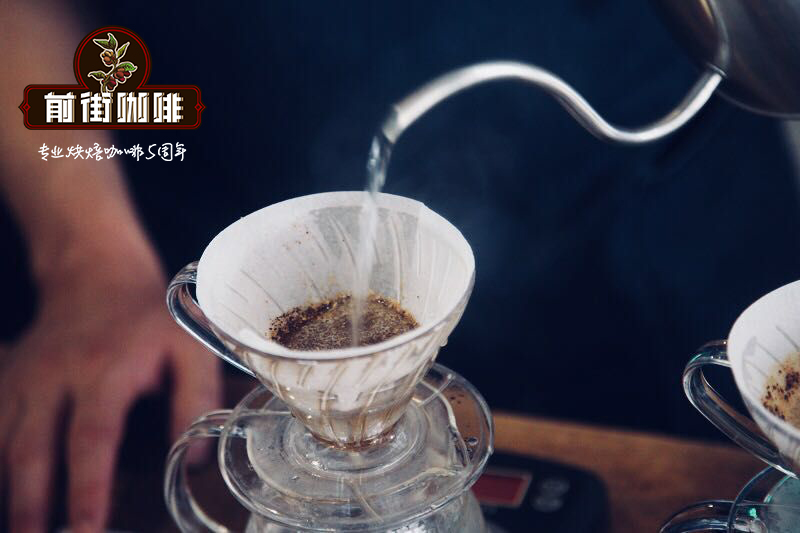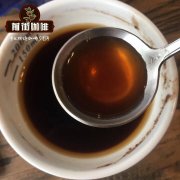How to make African coffee? What is African coffee brand? What are African coffee producing areas?

Professional coffee knowledge exchange more coffee bean information please follow the coffee workshop (Wechat official account cafe_style)
When it comes to Africa, Ethiopian coffee is a classic.
After all, Ethiopia has always been regarded as the birthplace of coffee. When you understand the local way of handling coffee, you can probably understand that this imperial status is well-deserved. Even under the worst production conditions, coffee trees are blocked by other crops, the vast majority of farmers will still insist on not using agrochemicals. Only in some coffee industries operated by the government in the southwest of the country, a small amount of agrochemicals may appear in wet-treated coffee. However, Harar (Harald) and Yirgacheffe (Yega Xuefei), known as "garden coffee", are still exceptions, because coffee is always produced in small quantities by individual farmers in the traditional way.
Ethiopian coffee area
Most of the wet-treated coffee on the market comes from Sidamo, H é rr Coffee, Kaffa, and the unique combination of these regions gives Ethiopia an irreplaceable flavor. However, most people may not be able to figure out the differences between products when buying coffee, on the grounds that products will only be labeled as Ethiopian native species. In fact, it represents the rare combination of SL28, SL38, Catuai, Geisha and Typica. The reason why Ethiopian farmers do not specify the name of the variety is to prevent the loss of varieties overseas, just as Rosa coffee was carried forward by Panamanians. Of course, they may not be able to identify the varieties planted because their production is too extensive.
Ethiopia, a landlocked country located in the Horn of Africa, is the most populous landlocked country in the world. Ethiopia is regarded as the birthplace of coffee-Arabica species (Arabica). It has rich native varieties and a wide range of genetic sequences, many of which can not be found in other countries. Coffee in Ethiopia is mostly grown by small farmers on their own small farms or in wild and semi-wild environments, and nearly 15 million people across the country are involved in growing and processing coffee beans. As the birthplace of Arabica coffee varieties, coffee consumption dates back to the 10th century, when the first African nomads to eat coffee fruits (coffee cherries / coffee cherries) mixed coffee beans, oil and spices into refreshing and refreshing foods. Coffee farmers in Ethiopia mostly grow and harvest coffee by hand, in conjunction with the Coffee and Tea Development Department set up by the local government to improve and manage all coffee beans.
Yega Xuefei Yirga-Cheffe
Yirga is a high-altitude town in Ethiopia-Sidamo province. The word "Yega" has the meaning of "let it settle", while "cheffe" means "marsh". Because of the local environment and climate, the coffee grown is famous for its special lemon and citrus flavor, which is different from that of other parts of Ethiopia, so it is an independent producing area. Yega Xuefei coffee trees are widely grown in high 1900m--2200m alpine areas, while non-cultivated coffee trees grow in the woods. Although they are in the tropics, the climate is cool, rainy but not humid, and the air is fresh and clean, so they are full of natural flavor.
Yega Xuefei stands out for its unique flavor in Ethiopia, which has many original species. It is the best coffee in Ethiopia, with sweet and sour fruits, citrus citric acid and jasmine, soft orange peel, raisins and cinnamon. The shallow Yega Xuefei tastes fresh and bright with the aromas of fruit tea and alpine tea. Washed Yega Chuefei has a bright and pure flavor and acidity, which highlights the unique characteristics of Yega Xuefei, while Sun Ye Jia Xuefei has a wild wine taste and gentle aroma, and the flavor is unique. For washing Yega, Qianjie coffee is recommended to be brewed at a higher water temperature, because the coffee beans are more uniform and more resistant to extraction, so the time can be a little longer, to two minutes and ten seconds to two minutes and twenty seconds. it will have a clear citric acid flavor. On the other hand, sun Yega, Qianjie coffee is recommended to be brewed at a water temperature of 89-90 degrees, with obvious aromas of fermented berries, sweet taste and some wine aroma.
Sidamo Sidamo
Growing in the southernmost Ethiopian plateau between 1400-2200m above sea level, southeast of Jima, just south of the capital, usually sweet, but also liked by most people, raw bean green with gray. The coffee in Sidamo has a variety of flavors. Different soil types, microclimates and countless native coffee species, towering mountains, highlands, plateaus, valleys and plains, diverse topography, and the geology of the area belongs to nutrient-rich, well-drained volcanic soil. the depth of the soil is nearly two meters, and the surface soil is dark brown or brown. The biggest advantage of the area is that the soil fertility is maintained through the circulation of organic matter, using the withered leaves of the surrounding trees or the residual roots of the plants as fertilizer. Therefore, the coffee produced in cities and towns has obvious differences and characteristics. The Sidamo taste in the sun is close to the smell of flowers, but about a little earthy. Water washing has a nutty fruit aroma with a slight cocoa aroma, but what the two pieces have in common is smooth taste and viscosity, comfortable and pleasant acidity and fragrance. Medium roasting is suitable for individual products, while deep roasting is suitable for blending coffee and good Espresso base. Qianjie coffee is recommended to be brewed at 89-90 degrees. It has a strong fermented fruit aroma, and its flavor prefers strawberries and blueberries. It is very sweet, accompanied by moderate acidity from hot to cold, and is very charming.
Lim limu
If you take the capital Adis as the center, apart from Hala, most Ethiopian coffee is produced in the southwest and south of the capital.
Limu is in the southwest of Yiguo, not long from the capital. After leaving the city, you can see a road to the west, another to the producing area: Lekempti (Lekampi), and then to the southwest, another larger road is to Jimma, and Lim is between these two producing areas.
Most of Lim's coffee is washed with water, which is different from Sidamo or Yegashifi in that her acidity is bright but has a spicy rhyme, and her wine style is more or less one of her characteristics. Most of Lim's coffee is grown at a height of 1200 to 1900 meters. Bright citric acid, body thick, oily coated palate with spice irritation, obvious sweetness in the finish, sweet and sour taste of grapefruit and ripe citrus.
In addition to Ethiopia, there are other producing areas, such as Burundi, Kenya, Yemen and so on.
Yemen
Until the sixth century AD, Yemen was called Arab, so coffee trees shipped from Yemen to other places were also called Arabian coffee trees. The origin of these trees is Ethiopia (Ethiopia), and the Dutch spread these coffee trees all over the world. Dutch businessmen heading eastward around the Cape of good Hope began to make a long journey.
Before wading to India, you have to pass through the east coast of Africa to the port of Mocha in Yemen. In 1696 the Dutch introduced the coffee tree to Ceylon (now Sri Lanka) and then to Batavia in Java. Mocha beans are smaller and rounder than most, which makes mocha beans look like peas-in fact, bean-shaped berry coffee beans (Peaberry bean) are sometimes called mocha beans. Mocha beans are similar to Ethiopian Harrar beans in shape, with small particles, high acidity and a hint of chocolate, so the attempt to add chocolate to coffee is a natural development. In Yemen, coffee growers plant poplars to provide shade for coffee trees to grow. As in the past, these trees are planted on steep terraces to maximize the use of less rainfall and limited land resources. In addition to the iron pickup and bourbon coffee trees, more than a dozen different coffee species native to Ethiopia are grown in Yemen. However, even the best coffee, such as premium mocha, is air-dried and the peel is connected to the beans. Until now, traditional stone mills are often used to remove dry and hard shells, which makes the shape of coffee beans very irregular and often damages them. Despite the high quality and smooth aroma of Yemeni coffee, there is something unsatisfactory, that is, the quality can not be continuously guaranteed, and the classification of its coffee beans is uncertain. Traditionally, the best coffee beans in Yemen come from Mattari, followed by Sharki, followed by Sanani. These producing areas are tanned, so the coffee beans have a wild flavor. Generally speaking, Yemeni coffee has a unique character, wild, complex and exciting, especially the charming sour wine and deep dark chocolate flavor. These beans are low in caffeine and are exported from December to April of the following year. The problem in the past has been that coffee from the north was mixed with shoddy stuff before it was shipped from the southern port of Aden. Only coffee shipped from the port of Hodeida can be determined to come from the north. Qianjie Coffee also has a Yemeni mocha full of classical flavor, brewed in 88 degrees water, with a strong chocolate flavor accompanied by a special spice aroma.
Kenya
Kenya grows high-quality Arabica coffee. Coffee beans are almost rich in cherry taste, slightly sour and thick aroma, and are very popular among Europeans. Especially in Britain, Kenyan coffee has surpassed Costa Rican coffee and become one of the most popular coffee. Located in Kenya below the equator of East Africa, the coffee beans planted are high-quality Arabica seeds. The size of the beans is medium-large, the meat is thick and round, the taste is strong and good, the taste is thick and full-bodied, the acidity is moderate, and exudes a unique flavor; the grade is divided into seven grades according to the size of the coffee beans, and the taste is divided into six grades from top to bottom. In the taste recommendation, "Kenya AA" is particularly well received. Kenya AA is extremely sweet and thick, and the taste is different from the thick and wild taste of Asian coffee beans. Kenya AA has a very clean thickness and a wide and delicate taste spectrum, with a soft, bright but changeable acidity in the front taste, which makes the dry sweetness of the medium taste and the aftertaste more perfect. The aroma of Kenya AA is also outstanding, with berry aromas, which is related to the phosphoric acid content of the soil from Kenya or the washing of secondary fermentation. Qianjie coffee is recommended to be brewed at a water temperature of 90-92 degrees. It has a strong sour aroma of virgin fruit and is very charming.
Qianjie coffee: Guangzhou bakery, the store is small but a variety of beans, you can find a variety of unknown beans, but also provide online store services. Https://shop104210103.taobao.com
Important Notice :
前街咖啡 FrontStreet Coffee has moved to new addredd:
FrontStreet Coffee Address: 315,Donghua East Road,GuangZhou
Tel:020 38364473
- Prev

What are the famous coffee beans in Africa? How do you drink African coffee? What's a good brand of African coffee?
Professional coffee knowledge exchange more coffee bean information please follow the coffee workshop (Wechat official account cafe_style) African coffee is mainly distributed in the East African plateau strip, north of Yemen, Ethiopia, then branches into the seaside Kenya, Tanzania, as well as the heart of Africa three small countries Uganda, Rwanda, Burundi, and finally to the southernmost Malawi, forming thousands
- Next

What's a good brand of African coffee? How do you drink African coffee? What are the famous coffee beans in Africa?
Professional coffee knowledge exchange more coffee bean information Please follow the coffee workshop (Wechat official account cafe_style) African coffee has been popular all over the world with its rich berry flavor and bright citric acid flavor. List of Top Ten Best Coffee Brands in Africa: 1) Tanzania Peaberry Coffee the best coffee brand in Africa and the rest of the world is the undisputed Tanzania
Related
- What documents do you need to go through to open a coffee shop? coffee shop coffee shop certificate processing process
- How to purchase Coffee beans in small Cafe how to choose a suitable supplier for domestic Coffee supply Company
- How to drink Starbucks Fragrance White Coffee? how to make Australian White Coffee? what Italian coffee beans are recommended?
- The Story of Flora Coffee: the name of Flora Coffee Bean and the implication of the Flowers on Florna Coffee
- How much does a cup of coffee cost? How much is the profit of a cup of coffee? What is the profit of the coffee shop in a year?
- Yunnan small Coffee, known as "fragrant Coffee", introduces the characteristics of Alpine Arabica Coffee producing areas in Yunnan, China
- 2023 latest Starbucks full menu price list how much is a cup of Starbucks coffee what is better to drink the most popular hot and cold drinks recommended
- Starbucks different kinds of Coffee Price list Starbucks menu 2023 Top Ten Best drinks in Starbucks
- Starbucks Spring praise Comprehensive matching Coffee Bean theme Story Packaging implication and taste description
- The cost of a cup of coffee latte American coffee cost price and selling price

